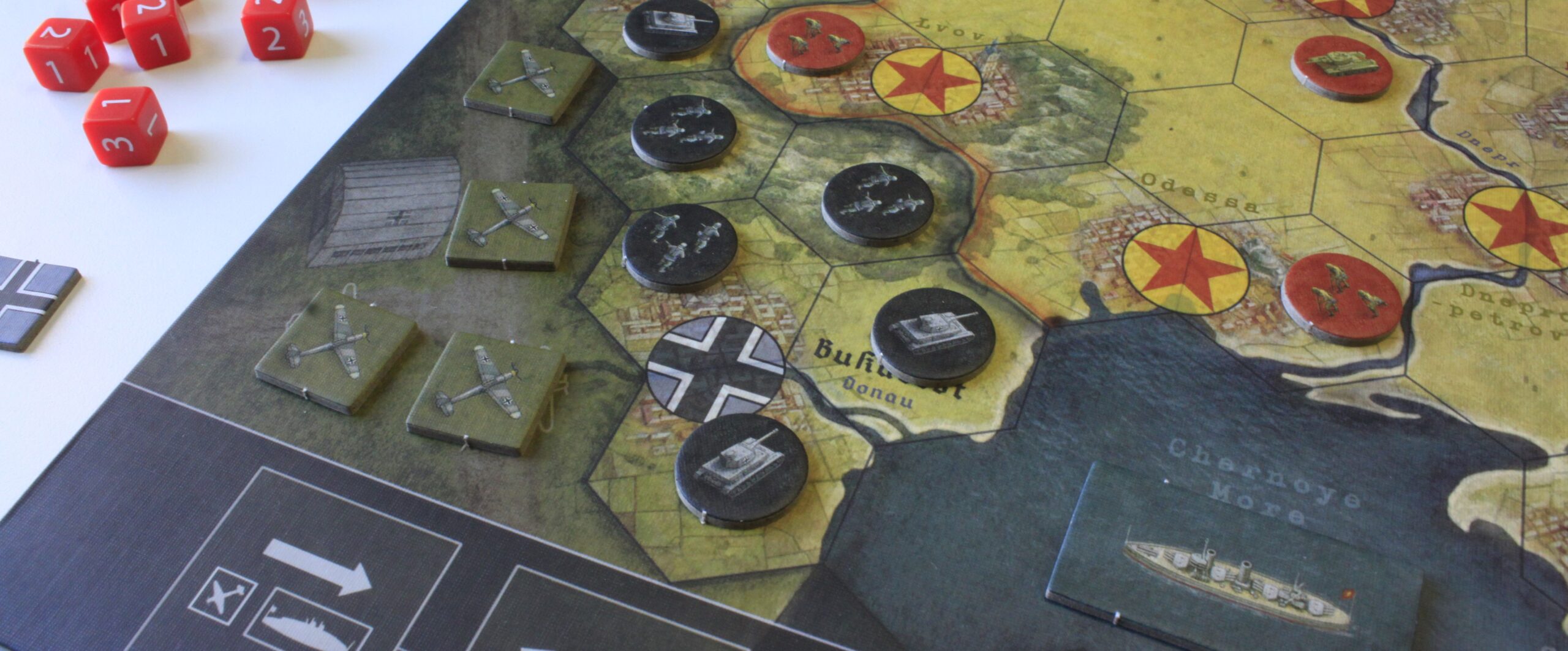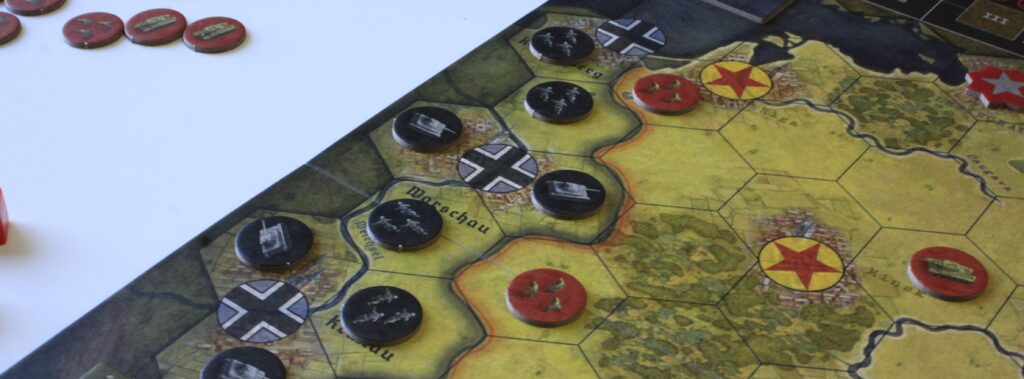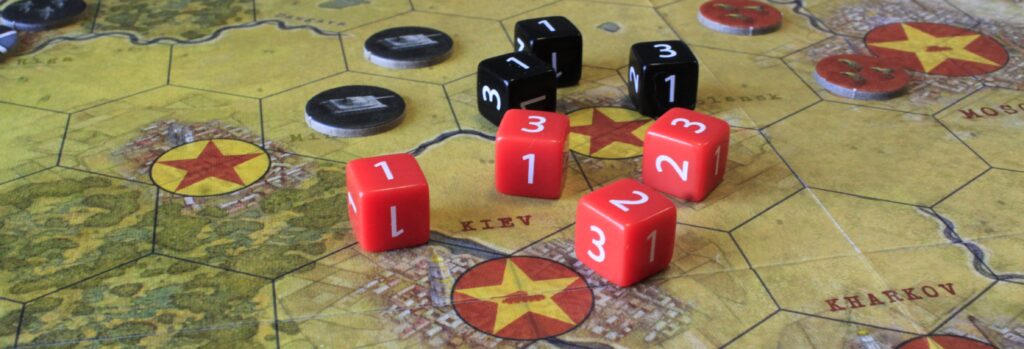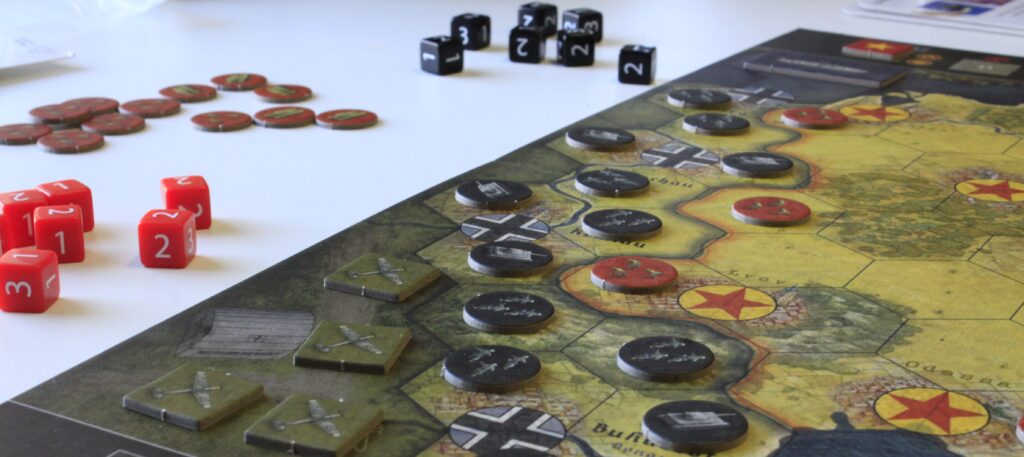
Iron, Blood, Snow & Mud is a WW2 East Front with a unique approach to movement and the impact of seasonal weather. As the Axis the challenge is to be able to push ahead while the going and weather is good, but not get so strung out the Soviet counter-attacks and Partisans cut the supply lines. For the Soviets, it’s knowing when and where to counter-attack, and where to place the Partisans.
In this 2-part How We Make Games blog, designer Guglielmo Duccoli provides some tips for both sides.

Part 1: Axis player strategies
As the Axis in particular, Iron, Blood, Snow & Mud (IBSM) is a game that requires a careful evaluation of your strategy.
Initially, you will find it easy to quickly advance across the map using Convoy movement. That is how things went historically: at the outbreak of Operation ‘Barbarossa’, Wehrmacht troops penetrated the Soviet Union with ease, encircling and capturing hundreds of thousands of enemy soldiers.
However, the Axis player should not delude themselves. Just like in reality, things will become hard going. Here are the main elements to keep in mind in order not to turn the rapid advance into a trap

1 – The effect of Mud and Winter seasons. These play a key role. In turn 2, you will not be able to rely on air support, and in turn 3 you will not be able to take advantage of Convoy movement, which will make your troops unexpectedly slow and difficult to coordinate. Be prepared for this! Keep your forces cohesive, preventing the most advanced points from being cut off by opposing regular and air units, and the placement of Partisans.
2 – The ‘time factor’. Although you start with a substantial numerical advantage in units, be aware that your units, once eliminated, cannot be replaced. The enemy, on the other hand, will receive reinforcements on a regular basis, albeit in limited numbers. Whatever your plan, you have little time to implement it: in the long run, Stalin should have the upper hand.
3 – Controlling the cities and the rear. Gaining control of enemy Urban Locations is essential, even if they are not part of your overall victory objective. If you leave uncontrolled locations behind you, they can be used by the Soviet to place reinforcements. Furthermore, it is essential to keep a few units in the rear, ready to intervene in case of an enemy Blitz (in particular Königsberg, which can be controlled by a single Soviet army) and to counter the presence of Partisans. These can isolate your most advanced armies. In general, it is unwise to let Partisan units accumulate turn after turn: better to take them out as soon as possible, even at the cost of taking a few units out of combat areas.

4 – The interaction between infantry and armored units. In the first few games you may feel that Tank units are much more valuable than Infantry units. In reality, to achieve victory you need to face the enemy with the support of Infantry units, which, if well positioned and played in the best order, can effectively support large numbers of friendly units in combat. The perfect infantry-armored mix was one of the Wehrmacht’s best weapons, and IBSM gives you the opportunity to reproduce this winning tactic with a certain amount of verisimilitude.
5 – Attack directions. In general, the Axis player acts along two main lines: the first is the northern front, aiming directly at Moscow and the capture of Stalin, perhaps with a diversion made to destroy the Leningrad fortress. The second, in the center-south, is intended to capture the large industrial centers in order to achieve victory in the long run; here too, a diversion to destroy the fortress of Sevastopol may be planned. In some games, a lucky run by well-coordinated units towards Moscow can bring about the rapid fall of Moscow and the subsequent capture of Stalin, just as was Hitler’s dream. More commonly, however, it is through a balanced attack in both directions that the German player secures the greatest chance of victory.
6 – Flexible plans. Capture Stalin or control the industrial centers of the Soviet Union? At every turn, you must be ready to reconsider your plans based on the outcome of the fighting and the opponent’s moves. The destruction of at least one of the two fortresses (Leningrad and Sevastopol) is laborious and may take more energy and time than you had hoped, but it is a guarantee that you will be able to change your objective even at the last moment. If you fail to destroy at least one fortress in time, you will be forced to chase after Stalin as your only hope of victory. This will allow the Soviet player to concentrate every single unit on defending its leader to preclude your victory.
